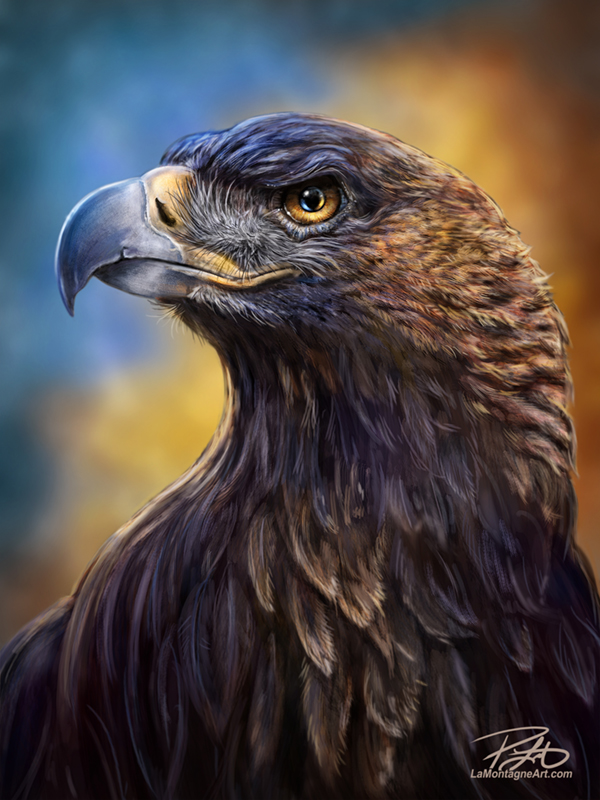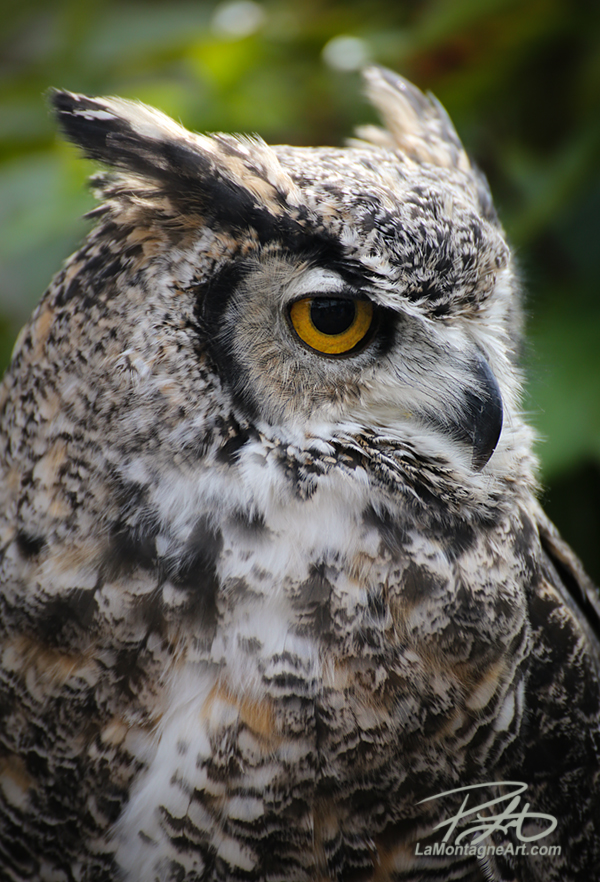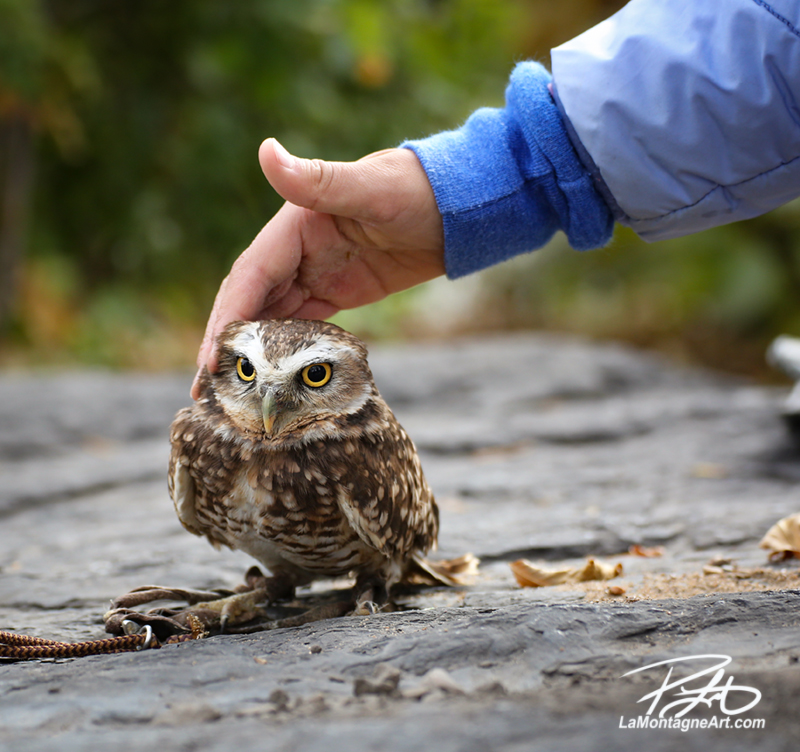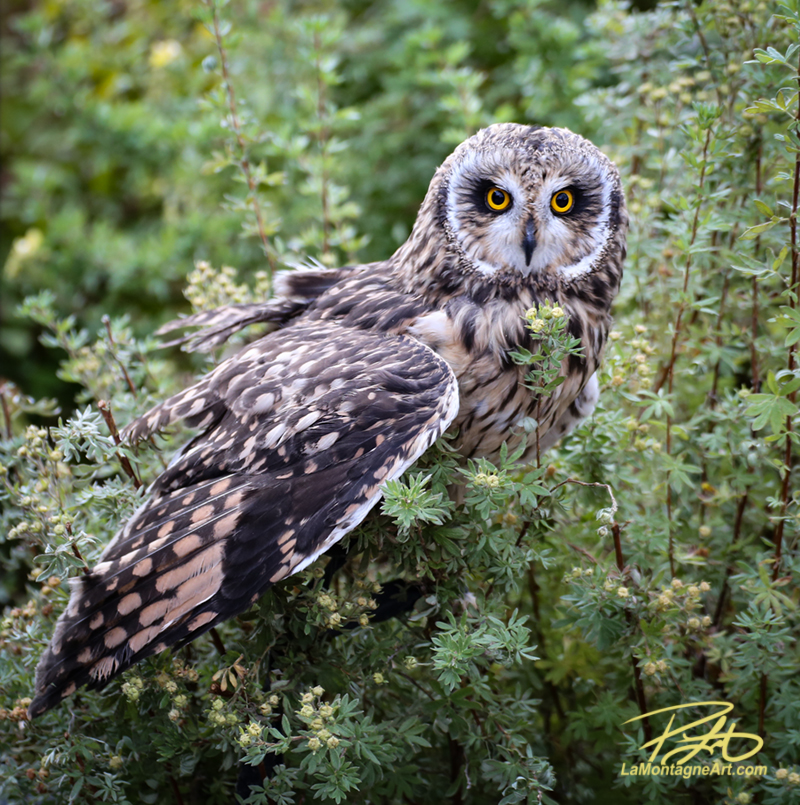
After my first visit to the Alberta Birds of Prey Centre in Coaldale, Alberta last year, I was looking forward to another visit this season. Unfortunately, with other obligations close to home, I didn’t manage to get there before they closed last month for the season.
 After reading their latest newsletter, which is always informative, I realized that I had not only failed to visit this year, but I hadn’t contributed financially either. I called up last month to make a donation and the patriarch of the family, Colin Weir, told me they’d be in Canmore again on October 5th at the Civic Centre.
After reading their latest newsletter, which is always informative, I realized that I had not only failed to visit this year, but I hadn’t contributed financially either. I called up last month to make a donation and the patriarch of the family, Colin Weir, told me they’d be in Canmore again on October 5th at the Civic Centre.
I marked it in my calendar and made sure I wouldn’t be away or have other obligations.
A really nice day for it, I got there first thing on Saturday to avoid what would later become a good crowd of people. The birds were outside, in conjunction with a larger event focusing on Geology, fossils and the Canmore Museum, located in the Civic Centre.
The regular cast of characters were there, the ambassadors that travel with Colin when he goes to these events. These are birds that can’t be released back into the wild and have lived at the Centre for a long time. A Great Horned Owl, Short Eared Owl, Barn Owl, Burrowing Owl and Golden Eagle, each with names like Basil, Dexter and Edgar.
 Their Golden Eagle is in her early thirties, and I painted her a couple of years ago. Sarah is a beautiful bird and Colin admits he’s very close to her, having raised her since the 1980s. His daughter, Aimee has joked that Sarah is the favorite child.
Their Golden Eagle is in her early thirties, and I painted her a couple of years ago. Sarah is a beautiful bird and Colin admits he’s very close to her, having raised her since the 1980s. His daughter, Aimee has joked that Sarah is the favorite child.
 While I enjoyed painting Sarah, it’s not one of my more popular prints, largely because when the general public thinks of eagles, they’re most often after the Bald variety and that painting of mine is far more popular than this one.
While I enjoyed painting Sarah, it’s not one of my more popular prints, largely because when the general public thinks of eagles, they’re most often after the Bald variety and that painting of mine is far more popular than this one.
Even still, I couldn’t resist taking more photos of Sarah, knowing I still may do another painting of her, for my own enjoyment.
 I spent a good couple of hours there, taking hundreds of photos of all of the birds. The opportunity to get up close and personal, acquiring such detailed reference is one I rarely pass up. I was happy to leave another donation for the privilege of having the birds come to me.
I spent a good couple of hours there, taking hundreds of photos of all of the birds. The opportunity to get up close and personal, acquiring such detailed reference is one I rarely pass up. I was happy to leave another donation for the privilege of having the birds come to me.
 When it comes to supporting charities and causes, I would encourage you to find the thing for which you feel a personal connection.
When it comes to supporting charities and causes, I would encourage you to find the thing for which you feel a personal connection.
Whether it’s research into a medical illness that has touched you or a member of your family, efforts for building a new library in your community, or a regular donation to the food bank, find something you can regularly support that makes you feel like you’re making a difference.
As this is a wonderful facility that rescues and rehabilitates birds of prey, I know how much they rely on public support to continue the work they do. With so many worthwhile charities and causes out there, it can be overwhelming to want to give to everybody, but only having the funds to support a few. I decided quite some time ago that all of my charitable donations would go toward wildlife causes, especially facilities that help animals in need of emergency care and rehabilitation. I make a monthly donation to the Alberta Institute for Wildlife Conservation in Airdrie, contribute to Discovery Wildlife Park in whatever way I can, and I support the Alberta Birds of Prey Foundation, but I say No to most everything else, even though I still feel guilty while doing so.
Giving is one of the most selfish things we do, because it feels so good. It’s addictive. I’ll freely admit that it’s also self-serving for me to support wildlife causes and facilities because it’s allowed me to be able to get up close and personal with many of the subjects I’ve painted. How could I not support them in return?
I make a good living, but I’m not wealthy, despite the outsider’s view that everybody who lives in Canmore and Banff is rich. That’s right, the people serving coffee in the local shop, working at the gas stations, cleaning hotel rooms, and working in the grocery store are all rich people, slumming it because they’re bored.
To support a charity, any charity, doesn’t required a huge outlay of funds. A monthly donation of even $20 helps these places because they’re not just relying on your contribution but all of the others who can only give a little, which amounts to a lot. A monthly donation helps them budget for the year, to get the most of their donations and stretch it as far as they can.
I was talking to Colin on Saturday about the challenges faced with fundraising in a facility like his. He told me that their small staff does everything, from rescuing the animals, caring for them, releasing them, training new staff and volunteers, ordering for the gift shop, maintaining the facilities and what I can only imagine is a much longer list of daily duties that go on even when the facility is closed to the public in the off-season.
He told me about somebody who had called him recently from Fort McMurray who hit a Great Horned Owl with his truck at night. Colin showed me the picture of the owl trapped inside the damaged grill, looking out at the man taking the photo. He had to talk the guy through the extrication over the phone and they managed to free the owl that was seemingly undamaged. These types of calls are not unusual, and come at all hours.
On top of all of that, they also have to have a sharp focus on fundraising, or it all stops.
While the Alberta Birds of Prey Foundation has a few generous corporate sponsors, like Fortis Alberta and AltaLink, they don’t receive any funding from the Alberta or federal governments. When governments change, priorities change and funding can suddenly be frozen or come with strings attached that would ultimately hinder their good work, rather than help.
If you think about some of the larger, more well-known charities, Colin points out that those organizations often have fundraising and marketing departments with more people in them than the entire staff at the Alberta Birds of Prey Foundation. Not to mention that the marketing budgets of larger charities often exceed the entire operating budget of a facility like the Birds of Prey Centre, where all of the funds raised go directly to conservation.
The next time you’re thinking about where best to put your limited charitable donations, I would encourage you to find somewhere that does great work that aligns with your values. Consider choosing a small facility, where they might not have the flashiest of ad campaigns, but are on the ground doing great work that matters, necessary work that if they didn’t do it, nobody would. You won’t get the chance at a lottery prize or be invited to a gala fundraiser, but you’ll be able to see firsthand where your money goes and the good that it does.
It might be your local SPCA or animal shelter, a local greenhouse that grows food for struggling folks in your own community, or somewhere like the Alberta Birds of Prey Foundation.
Be selfish. Give a little.
Cheers,
Patrick
 If you’d like to receive my newsletter which features blog posts, new paintings and editorial cartoons, follow this link to the sign up form.
If you’d like to receive my newsletter which features blog posts, new paintings and editorial cartoons, follow this link to the sign up form.
